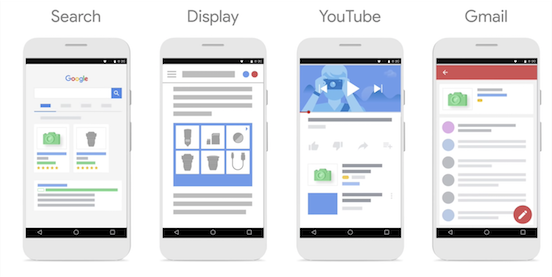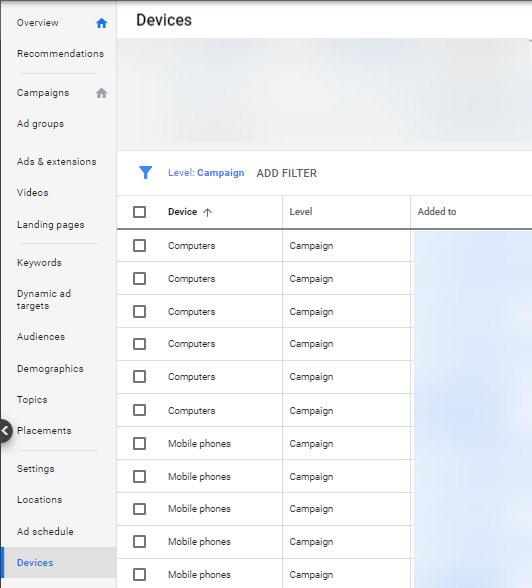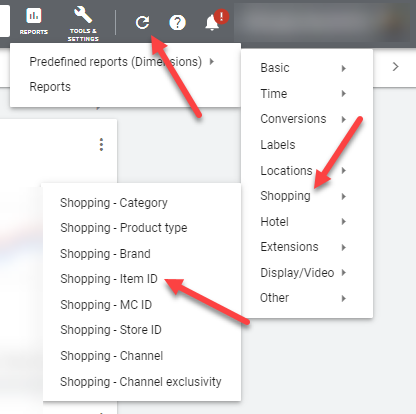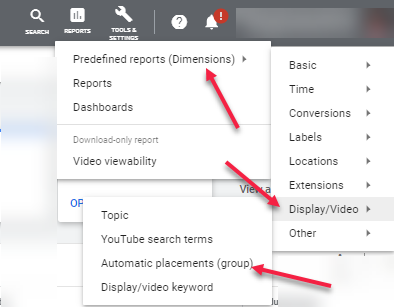What Are Smart Shopping Campaigns?
Google Ads Smart Shopping campaigns are a fully automated campaign type that combines the look of traditional shopping ads with the dynamic aspect of dynamic remarketing campaigns. Google utilizes your Shopping Feed, Bids and Machine learning to match your ad to what it believes is a relevant search. It also has the capability to show a personalized ad to users who have engaged with your products or your website though GDN.
Still not running Smart Shopping Campaigns? Well get on it! Here are a few tips and tricks to get you started.
Smart Shopping Capabilities
Smart Shopping Ads appear across Google networks including the Google Search Network, the Google Display Network, YouTube, and Gmail.

Google Search
Search queries along with predicted intent are used to determine which of your products will be shown.
Google Display Network (GDN)
Display Ads are personalized based on previous user engagement with your products or website.
- You are required to also upload your logo (which should already be in Google Merchant Center), an image, and text.
We have seen that Smart Shopping takes priority over traditional Shopping campaigns and display remarketing campaigns for the same product within the same account. So if you see a decrease in performance for those ad types, that’s why. If your Smart Shopping campaigns are successful, we recommend pausing Traditional shopping campaigns altogether.
How To Optimize Shopping Campaigns
Bids and Budgets
Google recommends practitioners “use the combined historical daily spend of your current Standard Shopping and display remarketing campaigns to set a budget for your new campaign.” You can always set an initial budget to test and adjust accordingly after the learning period.
Along with a fully automated Smart Campaign, comes (you guessed it) Automated Bidding. Seer is leaning heavily into automation and recommends testing smart bidding strategies whenever possible. Smart Shopping campaigns automatically work to maximize your conversion value within your determined budget. If you have a minimum return goal you need to hit, you can also set a target return on ad spend (ROAS).
- After the learning period (~15 days), check in and adjust tROAS goals to meet efficiency and/or conversion goals.
- For better return, set a more aggressive ROAS target. This will help the Google Ads algorithm strive toward a higher return, rather than focus on conversion volume. Note: Conversion volume as well as overall volume will decrease.
- For more visibility and conversions, set a less aggressive ROAS target. This will help the Google Ads algorithm strive toward conversions, rather than focus on return. Note: Return On Ad Spend (ROAS) will decrease.
- Check in every few weeks to make sure this campaign is hitting your goals and adjust return targets appropriately.
Run a device analysis
💡 Get reporting on device performance and use this to improve your product page performance on specific devices OR tailor your shopping feed content to specific devices.

Product Segmentation
💡 Run an Item ID report (Reports > Predefined Reports > Shopping > Item ID Report) to view performance by product. You can use this data to sort products into different campaigns by performance or identify feed optimization opportunities.

Identify Negative Placement Opportunities
💡 Run an account-level automatic placements report (Reports>Predefined Reports > Display/Video > Automatic Placements (group)) and identify negative placement opportunities, if applicable.

Exclude Poor Performers
💡 Exclude product groups or individual Item IDs from your campaign based on performance.
How do I know if my smart shopping campaigns are working?
We get it, it can be nerve-wracking trying a new campaign type for the first time, especially an automated one. But trust the machine!
Give The Machine Time To Learn
While you should check in on your campaign the initial days after launch to make sure it’s delivering correctly, you don’t want to start judging performance right away. Give the campaign ~15 days to learn your campaign and optimize toward your goals.
![]()
Make Sure You Have Enough Data
The initial days after launch are not going to give you enough conversion or revenue data to truly evaluate performance. The more data you have to evaluate performance, the better. Stop Guessing - let the data tell the story.
![]()
Consider Your Primary KPIs and Goals
Although Smart Shopping can be a bit of a black box, machine learning is optimizing towards the goals and KPI’s you initially set.
You may think to yourself: “This campaign has fewer impressions/clicks than my traditional shopping campaign.” or “This campaign has a different Average CPC than my traditional shopping campaign.”
But remember: If you set a tROAS goal, Google is working toward getting your campaign as close to that ROAS target as possible. As mentioned above, for higher return, set a more aggressive ROAS target. For more visibility and conversions, set a less aggressive ROAS target.
💡 Pro Tip: Try not to adjust the tROAS goal within the learning period.
![]()
Take Seasonality Into Account
Slower times of the year for your business/industry are usually a great time to test new initiatives - but it’s definitely important to account for seasonality. If you're a swimsuit company that launches a Smart Shopping campaign in November - campaign performance at that time may not be a true indicator of Smart Shopping’s true potential.
![]()
Take Lag Conversions Into Account
Lag refers to the time between when a user clicks an ad and when the same user completes a conversion action (in E-Commerce, it would be a transaction).
Why does this matter? Some conversions take more time than others. I have seen conversion variances fluctuate as much as 10-15% (even on a weekly basis). If your account usually experiences lag conversions, it may take a little more time to gauge true performance.
![]()
Now that you have these tips and tricks under your belt, it's time to create your first Smart Shopping campaign. If you have any other questions about Smart Shopping, or PPC in general, reach out to the greater team here at Seer!
And be sure to sign up for the Seer newsletter to stay up to date on all things digital!


